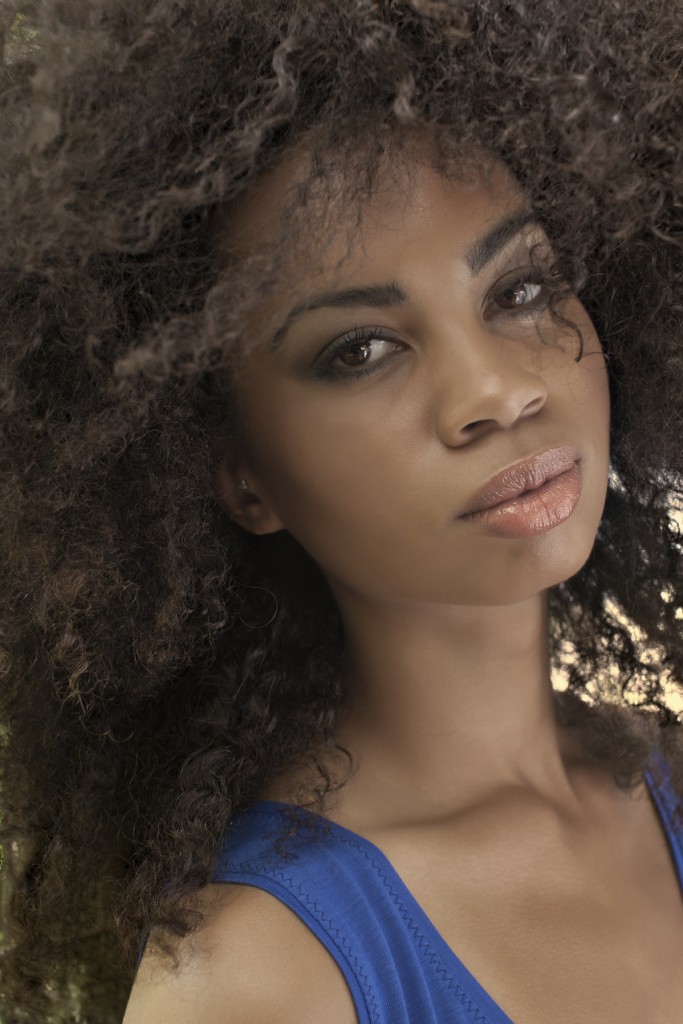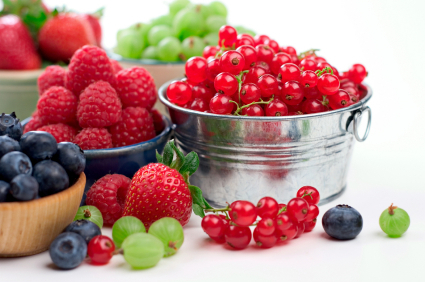This is a continuation of Growing Your Hair and Preventing Damage. Go here to check out parts 1 and 2.
Hard Water
If you life in a hard water area, the minerals in the water can coat the hair, making it feel rough, dry and bumpy. Take a few strands between your fingers and gently run them down the strand. If it feels rough and bumpy, then it is likely you have hard water build-up. To remove the build-up, first off clarify the hair with a clarifying shampoo, Henna Sooq’s Soapnut Shampoo bar or 2 tablespoons of baking soda dissolved in 2.5 cups of warm water, which is then poured over the head, left on for a few minutes, rinsed and followed with an acidic rinse (this step is crucial to smooth down the cuticles).
To slough off minerals like calcium, do a club soda soak between clarifying and the acidic rinse. Club soda soaks do a great job at sloughing off the chalky minerals that gradually coat the hair over time with hard water use. To do a club soda soak, pour a warm, flat club soda over clarified hair and rinse after a few minutes. Follow with a diluted acidic rinse (1 TBS of vinegar in 2.5 cups of water). Sloughing off minerals is best after clarifying as clarifying removes all the general build up so that the club soda can do its magic.
Club soda is also great for swimmers as it helps to remove chlorine from the hair, which can dry the hair out if left on the hair. Club soda removes chlorine quickly and easily. After swimming, rinse the hair with water, then pour club soda on the hair and let sit for for up to 5 minutes, then rinse and condition, if desired. Wetting the hair with regular tap water prior to swimming helps save the hair from absorbing the chlorine-filled water.
Some tap water contains copper and iron, especially if you have old pipes, which can ‘adhere’ to the hair in the form of metallic salts. Oiling the hair with coconut and Organic Argan Oils after clarifying and de-mineralising can chelate copper and iron deposits on the hair. Just oil overnight and wash out in the morning with your favourite washing method.
Build Up
Not a major cause of breakage, but let’s cover it anyway (oh yes, the pun was intended!). Many hair products will cause buildup such as conditioners, some shampoos, herbs, oils and butters. Hair that has too much build up may feel rough, limp, dry and will lack volume. This may happen if you’ve been using the same product for a while. Try clarifying your hair and follow with a moisturising treatment. Good ways to clarify are with a clarifying shampoo such as Neutrogena Anti residue, or a diluted baking soda rinse (1 tablespoon baking soda diluted very well in 2 cups of warm water) followed by a diluted vinegar rinse (1 tablespoon vinegar in 2 cups cool water). I’ve seen many sources state that Apple Cider Vinegar clarifies; this is untrue. ACV serves as a good de-gunkifyer (removes shampoo bar residue and de-mineralizes hair to a degree) which makes it a fantastic rinses for people that have hard water or people that use shampoo bars, particularly in hard water.
Diet
Yep, this one is a big one. For our hair (and bodies, of course!) to stay happy, we need to consume the following:
Protein: Protein s excellent for general hair growth. Our hair depends on protein for proper growth. The best sources of protein are lean beef, chicken breast, salmon, kidney beans, Milk, Tofu, cheese, eggs, brown rice, peanut butter, whole wheat bread and broccoli.
(Source)
Zinc: Zinc helps to build the hair proteins. Food that is high in zinc are oysters, wheat germ, liver, sesame seeds/tahini, low fat roast beef, roasted pumpkin and squash seeds, dried watermelon seeds, mutton, and peanuts.
(Source)
Selenium: Selenium also has a part in keratin production and helps prevent damage of the skin and hair follicles at a cellular level. Selenium-rich foods are Brazil nuts, sunflower Seeds, tuna, halibut, sardines, flounder, salmon, oysters, mussels, shrimp, clams, scallops, beef, liver, lamb, pork, chicken, turkey, eggs, mushrooms (button, crimini, shiitake), wheat germ, barley, brown rice, oats, and onions.
(Source)
Sulfur: Sulfur helps by encouraging steady healthy hair growth and stops the hair from becoming brittle. Not only does it help when ingested, it also helps to apply sulfur topically on the scalp for hair growth. Sulfur-rich foods are pork, turkey, eggs, oysters, halibut, tuna, lobster, flax seed, sunflower seed, garlic, onions, asparagus, cabbage, brussel sprouts, broccoli, kale, turnips, organ meat.
(Source)
Iron: Iron helps with scalp circulation and by carrying oxygen to the hair follicles. Some iron-rich foods are red meat, liver (do not eat if pregnant), whole grains (amaranth, quinoa), soaked dry beans, nuts, seeds, mushrooms, potatoes, parsley, olives, tamarinds, persimmons, blueberries, mulberries.
(Source)
Iodine: Iodine is responsible for assisting the thyroid gland to produce hormones responsible for hair growth. Iodine can be found in salt, but it is actually the wrong type of iodine. Instead opt for iodine-rich foods such as sea vegetables, cranberries. organic navy beans, Himalayan salt.
(Source)
Biotin: Provides nutrients to the root of the hair to strengthen them and help with growth. A warning on biotin: When it comes to biotin in pill form, do not take more than the recommended daily dose unless instructed so by a doctor. An overdose of biotin is harmful and can cause renal failure. This is why it is better to choose food sources. Great sources of biotin are brewer’s yeast, green peas, oats, soybeans, walnuts, sunflower seeds, green peas, bulgur and brown rice.
(Source)
Magnesium: Magnesium is an anti inflammatory that is associated with hair loss. Great sources of Magnesium are: black beans, raw broccoli, halibut, peanuts, okra, oysters, raw plantain, rockfish, scallop, pumpkin and squash seeds, soy milk, cooked spinach, tofu, whole grain cereal, whole wheat bread.
(Source)
Other needed nutrients are fats (monounsaturated, polyunsaturated and Omega-3 and 6 fatty acids, the GOOD kind! Stay away from hydrogenated fats), all the vitamins and silica (horsetail tea, leafy greens, cucumbers, Millet, oats, onions, Rice, whole grains, wheat, alfalfa, barley, beetroot). Hair growth does require a wide range of nutrients, doesn’t it? The great thing is, that by eating a balanced diet, we can be good to hair and not even know it ;). It is best to consume these vitamins through food. Being deficient in any of these nutrients can lead to hair loss.
Please, stick to the recommended daily intake of all minerals, vitamins and nutrients as over0dosing can be harmful to our health! Stay tuned for the future blog “Tasty recipes for healthy hair”.
Of course, don’t forget water! Our hair does happiest when our bodies are hydrated. Try to drink around 8 glasses per day Relaxation and exercise go hand-in-hand with a good diet. Stress and being sedentary greatly contributes to unhealthy hair. Both Yoga and meditation are great stress-relievers. Do something you enjoy. 🙂 If you have a healthy lifestyle and are doing all you can to have healthy hair, but are still having shedding issues, perhaps a trip to the doctor may be a good idea to rule out any health conditions.
Stay tuned for part 4!



















I found this website very gooood..Im an african girl with relaxed hair i want to know if it is safe using baking soda in hair,how can a do a good balance moisture/protein, what kind of herbs are good for tchiking the hair?
Sorry for so many question…is safe do amla oil or paste with amla fresh fruit and apply in relaxed hair?
Thank you Dany!
I really recommend our Ayurvedic Strength kit. Please view here: http://www.hennasooq.com/organic-ayurvedic-strength-hair-kit/
I’m not sure if amla fruit would be okay or give you the same benefits but the powder and the oil we carry are really excellent and will really provide you with all you need. Our best hair oil is our Cocoveda hair oil: http://www.hennasooq.com/cocoveda-hair-oil/
Hi there, Dany!
Baking soda is very alkaline, which makes it a great clarifier (once a month, usually. No more as it is a harsh cleanser and opens up the cuticle), however, Baking Soda must be diluted in water to make it safer for the hair (1TBS baking soda dissolved very well in 2.4 cups of warm water). Personally, I wouldn’t use it any other way as the baking soda particles are rather jagged and can rough up the hair. Pour solution over the hair, let sit for a few minutes and rinse very well. Follow with a diluted acidic rinse to close and smooth the cuticle.
The best time to clarify would be before any deep treatments. This will boost any treatment that is applied as the baking soda removes build-up from the strands allowing the treatments to penetrate. Something like this:
Clarify-> Deep treatment (protein first, followed by deep moisture)-> acidic rinse (1TBS vinegar in 2.5 cups of water.
The acidic rinse is important after baking soda as it neutralises the baking soda and closes/smoothes the cuticle.
Great herbs for thickening the hair are henna (which will tint the hair anywhere from orange-red to burgundy (or browns and blacks with the addition of katam or indigo), and cassia (colourless). Bhringraj, Brahmi and amla are also excellent for thickening the hair.
To find out if your hair needs protein or moisture do this:
After clarifying (no treatments, just the acidic rinse), take a shed hair and try to stretch it. If it stretches quite a bit and doesn’t snap and return to the original shape prior to stretching, then your hair needs protein. Try a Greek Yogurt, egg yolk (if you want to) and amla hair masque/mask once a week. If the hair snaps straight away without stretching, then you need lots of moisture. Oil damp clean hair, cover and sleep on it. Do this once a week until moisture is restored. If the hair stretches and it breaks, plus returns to the original un-stretched state, then your hair has perfect moisture and protein balance. Since your hair is relaxed, you may need both protein and moisture.
Yes, it is safe to do amla treatments on relaxed hair.
Good luck!
Oh, I forgot to ask: Amla also encourages curl, so if you’re not wanting to encourage your curls, it may be best to avoid it.
Okkk Thank you very very much im so happy, with this great information now i think im ready to start my hair journey!
This is so helpful and informative, i am so excited to try some of these additional things. I have a few questions mainly on the order of things.
Ive been dying my dark brown hair to cover greys with a combination of henna, amla, cassia and indigo. I want to build in the clarifying and acidic rinse and protein. First off, is colouring hair with the henna combo considered a deep treatment? I also need to use conditioner to get the henna helmut off, you dont mention the use of conditioner, should i use the acidic rinse before or after the conditioner?
I’ve often read that one should oil hair as a treatment after colouring as colouring can be a bit hard on hair, and i do this two days after (to let my colour set), is this the right way to do this? I also want to do the protein treatment so im all mixed up how to accomplish all this :).
Is the order of this right?
Clarify-demineralize with club soda-henna combo colouring- use conditioner to get henna out-acidic rinse
Two days later:
Oil- wash (with cocoveda shampoo bar) -acidic rinse.
And when i want to do a protein treatment or the honey hair nourisher, can i swap out the colour treatment (in between colourings) and replace that with the protein treatment or the butter, like this?
Clarify-demineralize-protein treatment (or honey hair nourisher) -wash – acidic rinse
Or should i just use the honey hair nourisher right after rinsing out my henna treatment?
Hope this makes sense, thanks in advance for your advice!